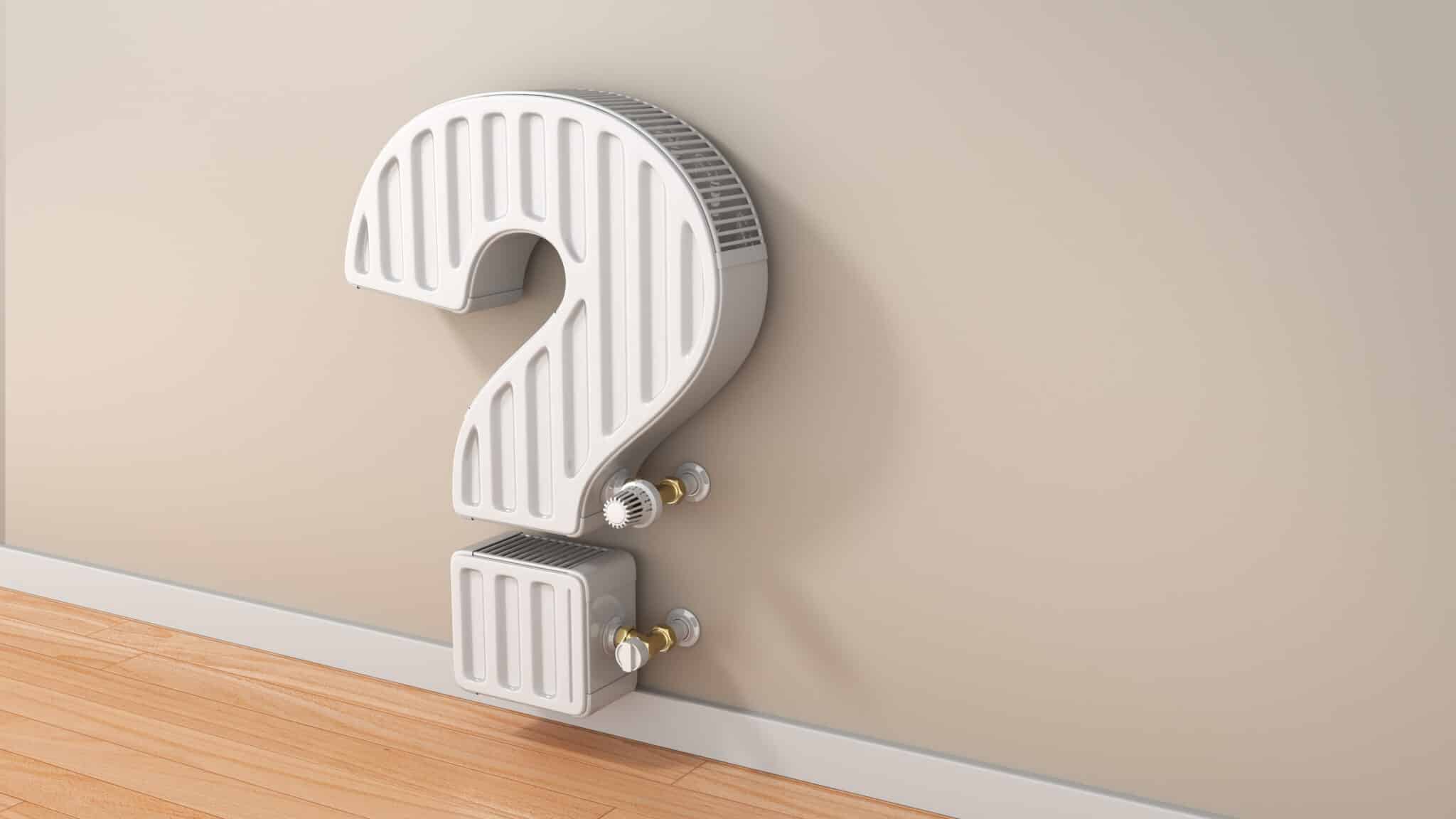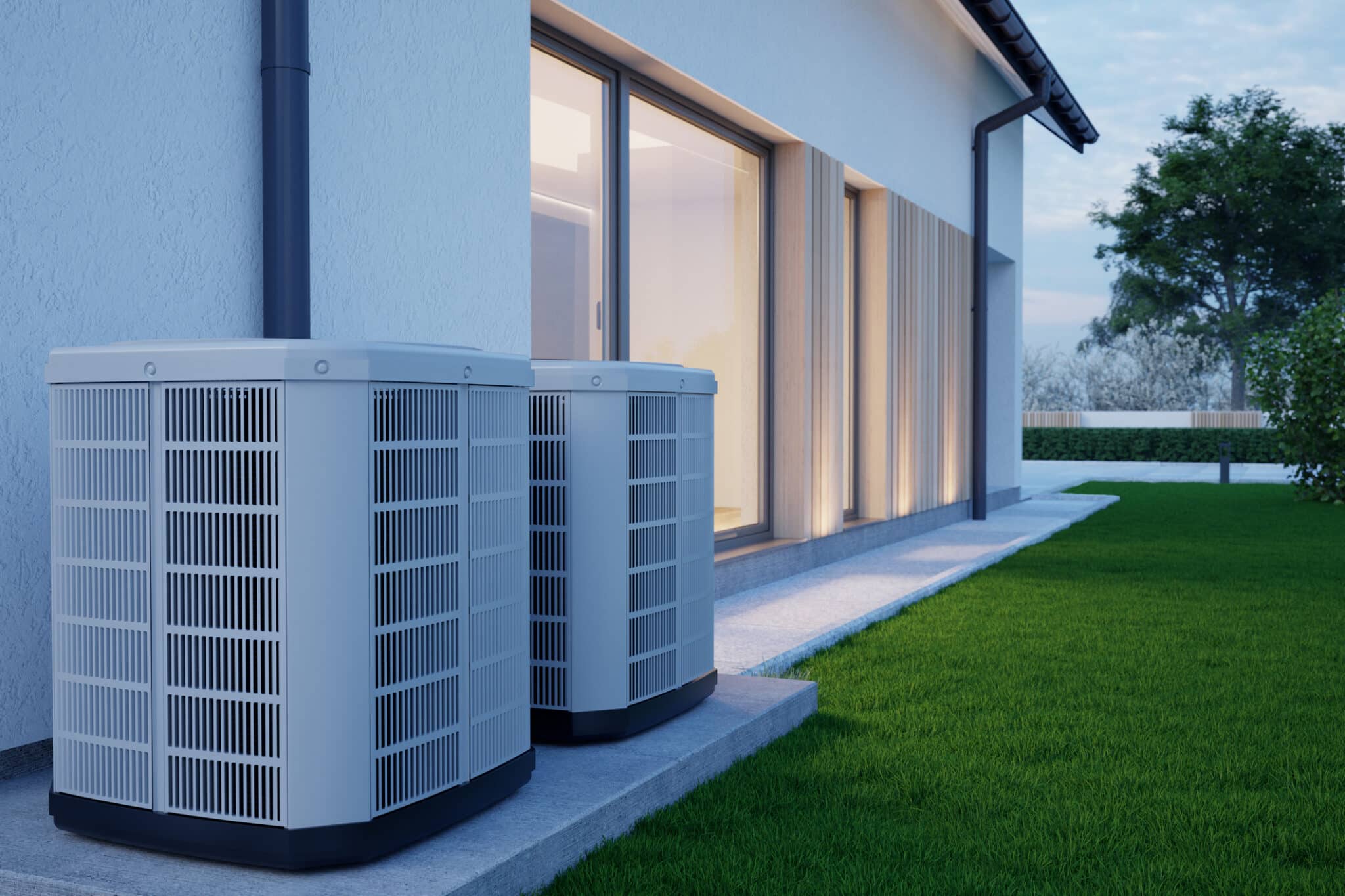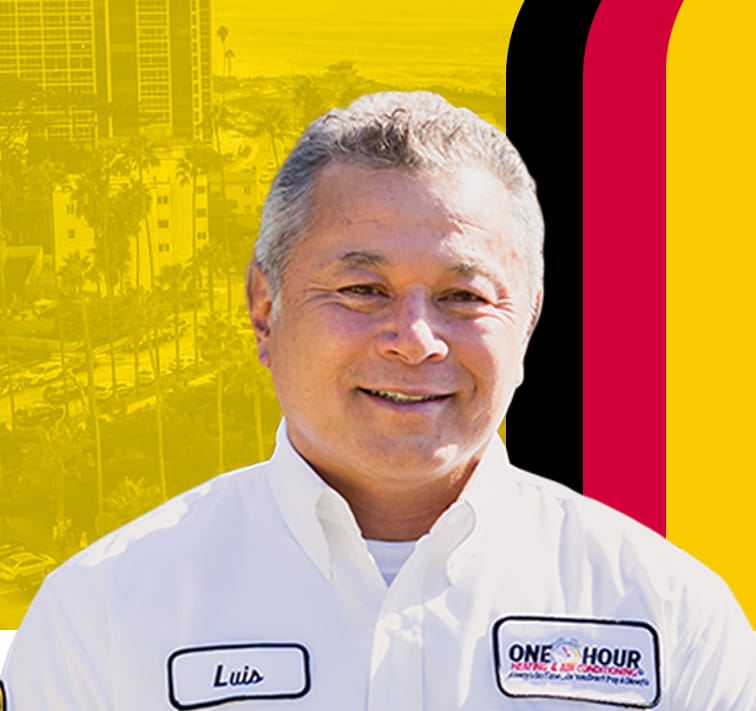Are you considering air conditioner installation but overwhelmed by the array of options and necessary details? This comprehensive guide is specifically crafted to assist you through the air conditioner installation process, ensuring you select the appropriate unit while guaranteeing flawless setup.
Understanding the different types of air conditioners is crucial for making an informed decision. Whether it’s a compact window unit, an extensive central air system, or a sophisticated ductless mini-split system, each type offers unique features and specific installation requirements. The optimal choice varies based on your space, budget, and cooling needs.
Moreover, the importance of proper air conditioner installation cannot be overstated. A correctly installed air conditioner not only operates more efficiently but also helps reduce energy costs and prolongs the unit’s lifespan. To assist you in preparing for this essential task, we’ll cover everything from the necessary tools and materials to important safety considerations.
By following this guide, you’ll be equipped with the knowledge to ensure your air conditioner is installed correctly and functions at its best, providing you comfort during the hottest days.

Why Invest in Professional Air Conditioner Installation?
Ensuring Efficient Cooling from Day One
Imagine stepping into your home on a scorching summer day, flipping the switch on your new air conditioner, and being instantly enveloped in a cool, refreshing breeze. That dream can become a reality from the very first day with professional air conditioner installation. The importance of a well-installed AC system cannot be overstated—it’s the cornerstone of home comfort, energy efficiency, and long-term savings.
When an air conditioning unit is installed correctly by professionals, like those at One Hour Heating & Air Conditioning of San Diego, it operates at peak efficiency. This means that the system uses less energy to cool your home, which not only saves you money on your electricity bills but also reduces the environmental impact. Professional air conditioner installation ensures that your AC unit is properly sized for your space and installed in an optimal location, both of which are crucial for efficient operation and effective cooling.
The Importance of Proper Air Conditioner Installation
Why can’t you just let any handyman handle your air conditioner installation? The answer lies in the complexity and importance of the task. Air conditioner installation is not just about physical placement and connecting a few wires. It involves a deep understanding of system design, airflow dynamics, electrical safety, and local building codes. Proper air conditioner installation affects almost every aspect of the air conditioner’s operation and longevity.
For instance, improper installation can lead to frequent breakdowns, inefficient cooling, and sky-high energy bills. It can cause the system to run longer than necessary, which wears out the components faster and leads to premature system failure. This not only hits your wallet hard in terms of repair and replacement costs but also leaves you sweating during the hottest days of the year when you need relief the most.

Choosing the Right Air Conditioner
Selecting the right air conditioner involves understanding the different systems available and determining the best fit for your space. Here’s a detailed look at the common types of air conditioners, each with unique features suited for various needs:
Window Units: Compact and easy to install, window air conditioners are ideal for cooling single rooms. They are a cost-effective solution that offers flexibility for seasonal use. Because of their simplicity and affordability, window units are a popular choice among homeowners who require immediate cooling solutions without significant installation challenges. Additionally, their removable design allows for easy maintenance and storage when not in use.
Central Air Conditioning Systems: These systems utilize a network of ducts to efficiently distribute cooled air throughout the entire home or building. Ideal for larger spaces, central air conditioning is particularly effective in maintaining a consistent temperature across multiple rooms. This system integrates seamlessly with existing heating systems, providing a comprehensive solution for year-round climate control. The installation of central air may require upfront modifications and investment but results in enhanced property value and improved indoor air quality.
Ductless Mini-Split Systems: Ideal for homes without existing ductwork, ductless mini-split systems offer a flexible approach to home cooling. These systems feature individual units in each room, which can be controlled independently, allowing for personalized temperature settings and reducing overall energy consumption by cooling only occupied spaces. The installation is minimally invasive, making it suitable for older buildings or additions where extending ductwork is impractical.
Hybrid/Dual Fuel Systems: These innovative systems combine the energy efficiency of a heat pump with the power and reliability of a gas furnace. Depending on the external temperatures, the system automatically switches between electricity and gas to optimize comfort and efficiency. During milder weather, the heat pump operates efficiently using less energy, whereas in colder temperatures, the system switches to gas heating to provide ample warmth. This adaptability makes hybrid systems an excellent choice for regions with fluctuating weather patterns, offering both environmental benefits and cost savings over time.
When determining the right size and BTU (British Thermal Unit) capacity for your space, it’s crucial to consider the square footage of the area you want to cool. An air conditioner that’s too small won’t cool efficiently, while one that’s too large can lead to excessive energy consumption and uneven temperature regulation. A general rule of thumb is to aim for about 20 BTU for each square foot of living space, but factors like ceiling height, window size, and room occupancy must also be considered.
This decision will not only affect your comfort but also your unit’s efficiency and operating costs in the long run. It’s advisable to consult with a professional to ensure you choose an air conditioner that matches your specific needs and circumstances. Getting this step right is critical to achieving efficient cooling without incurring unnecessary costs.
Preparing for Your Air Conditioner Installation
Planning to install a new air conditioner? Before the pros from One Hour Heating & Air Conditioning of San Diego arrive, there are a few things you should know. Proper preparation can save you time, money, and a whole lot of hassle. Here’s what you need to consider to ensure a smooth and efficient air conditioner installation process.
Evaluating Your Home’s Cooling Needs
First things first—how much cooling does your home actually need? It’s easy to think “the bigger, the better,” but that’s not always the case when it comes to air conditioner installation. An air conditioner that’s too big for your space can lead to inefficient operation and higher energy bills, while one that’s too small won’t keep you cool on the hottest days. To avoid these issues, take time to evaluate your home’s cooling needs.
Consider the size of your home, the number of rooms, ceiling height, and insulation quality. Think about how much direct sunlight each room gets and whether there are areas prone to heat buildup. If you’re not sure where to start with your AC installation, One Hour Heating & Air Conditioning of San Diego can help. They offer professional assessments to determine the right capacity and type of air conditioner for your specific situation.
Choosing the Right Location for Installation
Next, let’s talk about location. Where you install your air conditioner has a huge impact on its performance and efficiency. The goal is to find a spot that allows for optimal airflow, easy access for maintenance, and minimal disruption to your daily life.
For central air conditioner installation, you’ll need space for ductwork, an outdoor unit, and a location for the indoor unit that’s centrally located. This might mean some construction or rearranging, but it’s worth it for long-term comfort.
For split air conditioner installation, consider wall space and proximity to an outdoor unit. Window units require a window of the right size.
The professionals at One Hour Heating & Air Conditioning of San Diego can guide you through this process. They’ll help you find the best locations, keeping in mind both functionality and aesthetics. After all, you want your new air conditioner to work well without being an eyesore.
Pre-installation Considerations: What to Expect
Finally, let’s cover some key pre-installation considerations. The last thing you want is to be caught off guard by the installation process. Here’s what you can expect:
Clearing the Space: Before the installation team arrives, clear the area where the air conditioner will be installed. This includes removing furniture, decorations, and anything else that might be in the way.
Electrical Requirements: Ensure that your home’s electrical system can handle the new air conditioner. If upgrades are needed, it’s best to know ahead of time. A professional electrician can assess your electrical panel and make recommendations.
Permits and Regulations: Depending on where you live, you might need permits for air conditioner installation. This is something the professionals at One Hour Heating & Air Conditioning of San Diego can help with. They’ll handle the paperwork and ensure everything is up to code.
Noise and Disruption: Air conditioner installation can be noisy and may require drilling or other construction work. Be prepared for some disruption during the installation process, and plan accordingly.
By taking these steps to prepare for your air conditioner installation, you’ll set the stage for a successful and stress-free process. Whether you’re installing a central system or a split unit, a little preparation goes a long way.
And with One Hour Heating & Air Conditioning of San Diego on your side, you can rest assured that the installation will be smooth and professional. Get ready to enjoy a cool and comfortable home all summer long!
The Installation Process Explained
When it comes to air conditioner installation, understanding the process can turn a potentially stressful day into a smooth, informed experience. You don’t have to be an HVAC expert to get a sense of what goes into installing a new air conditioning system.
Here, we’ll walk you through a step-by-step guide to the installation, explain the tools and techniques used by professionals, and give you an idea of what to expect during testing and initial setup.
Step-by-Step Guide to Air Conditioner Installation
Pre-Installation Assessment: Before the installation begins, the professionals from One Hour Heating & Air Conditioning of San Diego conduct an assessment to understand your cooling needs. They consider factors like room size, insulation, and sunlight exposure to recommend the right air conditioner for you.
Site Preparation: The installation site is cleared of obstacles to ensure a safe working environment. If ducts are required, the team plans the best layout for optimal airflow. For split systems, they find suitable locations for both indoor and outdoor units.
Electrical Work: The team checks the electrical setup, adding circuits or upgrading panels if needed. Safety is key, so all wiring and connections are inspected to ensure compliance with local codes and standards.
Installation of the Unit: This is the hands-on part where the air conditioning unit is installed. For central air systems, ducts are set up or modified, and the indoor and outdoor units are placed. Split systems are installed by mounting indoor units and setting up outdoor units. Portable and window units require proper venting.
Connecting Components: Professionals connect all the necessary components, including refrigerant lines and drainage systems. This step requires precision to prevent leaks and ensure smooth operation.
Testing and Initial Setup: Once the installation is complete, the system is tested to ensure everything is functioning properly. The team checks for leaks, measures airflow, and sets up the thermostat. They also provide a demonstration on how to operate and maintain your new air conditioner.
Final Inspection and Clean-Up: The last step involves a final inspection to confirm everything is working as it should. The team cleans up the work area, removing debris and leftover materials. You’ll receive a walkthrough with tips for maintenance and guidance on what to do if any issues arise.
Tools and Techniques Used by Professionals
Professional air conditioner installation requires specialized tools and techniques to ensure safety and efficiency. Here are some of the key tools and practices used by the experts:
Refrigerant Gauges: To measure the refrigerant pressure and ensure it’s at the correct level.
Manifold Gauges: Used to check for leaks in the refrigerant lines.
Vacuum Pumps: To remove air and moisture from the system before charging it with refrigerant.
Ductwork Tools: For cutting, shaping, and sealing ducts.
Electrical Tools: To ensure safe and correct electrical connections.
Safety Equipment: Including gloves, goggles, and protective gear to ensure the installation team stays safe.
Professional installers rely on these tools and techniques to ensure the air conditioner is installed correctly and safely. By using the right tools, they can guarantee a high-quality installation that will keep your home cool for years to come.
Testing and Initial Setup
The final phase of the installation process involves testing and initial setup. This is where the professionals ensure your air conditioner is working at its best from day one. Here’s what to expect during this stage:
System Start-Up: The installation team will start the air conditioner to check for any issues. They’ll listen for unusual noises, check for leaks, and ensure the system is cooling as expected.
Airflow Measurement: Professionals will measure the airflow from the vents to make sure it’s even and at the correct volume.
Thermostat Setup: The team will set up and calibrate the thermostat, explaining how to use it and adjust the temperature to your liking.
Operational Walkthrough: Before they leave, the installers will give you a walkthrough of your new air conditioner, explaining how to use and maintain it. They’ll also answer any questions you have.
Once the testing and initial setup are complete, you can start enjoying the comfort of your new air conditioner. And with One Hour Heating & Air Conditioning of San Diego, you can rest assured that the installation was done right.
If any issues arise, their team is ready to assist, ensuring your system continues to operate smoothly and efficiently.
Cost Factors in Air Conditioner Installation
When you’re thinking about a new air conditioner installation, the cost is often a major consideration. It’s not just about buying the unit; many other factors play a role in the total cost of installation.
To help you understand these influences, let’s break down what drives the costs and how to budget effectively.
Understanding the Costs Associated with Different AC Units
The type of air conditioner you choose has a big impact on your budget. Central air conditioning systems are usually at the higher end due to their complexity and the need for extensive ductwork. This setup requires more labor and often involves installing both indoor and outdoor units.
Split air conditioners are a more flexible and generally more affordable option, as they don’t require ducts. However, if you plan to cool multiple rooms, you’ll need more indoor units, which can increase costs.
Window units are often the most economical choice, with simpler installation processes. However, these units might not be ideal for larger spaces or homes where consistent cooling is required throughout.
Aside from the type of unit, other elements can affect the installation costs. The brand and model you choose play a role, with high-efficiency units usually costing more upfront but potentially saving you money over time. Additional features like smart thermostats, air purification, or advanced energy-saving technology can also increase the price.
When considering your air conditioner installation, it’s important to weigh these factors and choose a system that balances performance, efficiency, and budget.
Understanding these cost factors will help you make an informed decision and prepare for the expenses involved in getting your new air conditioner up and running.
Budgeting Tips for Your Installation
Budgeting for a new air conditioner installation can feel overwhelming, but with a little planning, you can make it more manageable. Here are some tips to help you budget effectively:
Determine Your Needs: Start by assessing your cooling needs. How many rooms do you need to cool? What type of system best suits your space? Answering these questions will help you choose the right system without overspending.
Get Multiple Quotes: Don’t settle for the first estimate you receive. Reach out to several HVAC contractors, like One Hour Heating & Air Conditioning of San Diego, to get quotes. This way, you can compare prices and services to find the best deal.
Consider Long-Term Savings: Investing in an energy-efficient unit might cost more upfront, but it can save you money in the long run. Look for systems with high SEER (Seasonal Energy Efficiency Ratio) ratings, as they are more energy-efficient and can reduce your utility bills.
Plan for Additional Costs: Beyond the unit and installation labor, consider other expenses like permits, electrical upgrades, and ductwork modifications. Setting aside a buffer in your budget can help you avoid surprises.
How to Save Money on Air Conditioner Installation
If you’re looking to save money during your air conditioner installation, you’re not alone. Here are some strategies to keep costs down without compromising quality:
Choose the Right Time: Scheduling your installation during the off-season (fall or winter) can often lead to lower labor costs and discounted units. HVAC companies may offer promotions or discounts when demand is lower.
Bundle Services: If you need additional HVAC services, consider bundling them with your air conditioner installation. This can lead to cost savings and streamline the process.
Use Rebates and Tax Credits: Some energy-efficient air conditioners qualify for rebates or tax credits. Check with your local utility company or government agencies to see if you can benefit from these incentives.
DIY Preparations: While you should always leave the actual installation to professionals, you can do some prep work yourself. Clear the installation area, ensure easy access to electrical outlets, and remove any obstacles. This can reduce the time and labor required for installation.
By following these tips, you can save money on your air conditioner installation and still enjoy a high-quality cooling system. One Hour Heating & Air Conditioning of San Diego can help you navigate the costs and provide expert advice to ensure you get the best value for your investment.
With their guidance, you can find the right balance between cost and quality, ensuring a smooth and affordable installation process.
Maintenance Tips for Your New Air Conditioner
Once you’ve invested in an air conditioner installation, keeping it in top shape is crucial for maintaining comfort and extending the unit’s lifespan. Proper maintenance not only prevents costly repairs but also enhances energy efficiency. Here’s a guide to some essential maintenance strategies to keep your new air conditioner performing optimally.
Routine Maintenance to Keep Your AC Running Smoothly
Routine maintenance forms the backbone of a healthy air conditioning system. This includes simple tasks you can do yourself as well as more complex checks that might require a professional’s touch.
Regularly cleaning or replacing the air conditioner’s filters is crucial since they trap dust, dirt, and allergens, maintaining clean indoor air. Over time, these filters can become clogged, reducing airflow and system efficiency.
Similarly, the condenser coils in the outdoor unit can accumulate dirt and debris, which impacts heat transfer and cooling efficiency. These coils should be periodically checked and cleaned to maintain their condition.
It’s also important to ensure your thermostat is properly calibrated and functioning correctly. For those with programmable thermostats, settings should be optimized to enhance energy efficiency, aligning with your schedule and comfort needs.
Additionally, the ductwork of central air conditioning systems should be inspected for any leaks, damage, or blockages that could reduce airflow, as sealing any leaks can significantly improve system efficiency.
Common Issues and How to Troubleshoot Them
Even with regular maintenance, common air conditioner issues can arise, and knowing how to troubleshoot these can save time and stress.
If your air conditioner isn’t cooling properly, start by checking the thermostat settings and ensuring the filters are clean. Persistent problems could indicate a refrigerant leak, a faulty compressor, or blocked condenser coils, necessitating professional diagnosis and repair.
Unusual noises such as banging, rattling, or squealing typically indicate a mechanical problem, such as a loose component, a worn-out belt, or a failing motor. If these sounds occur, it’s advisable to turn off the unit and consult a professional to avoid further damage.
Water pooling around your air conditioner might suggest a clogged condensate drain or an issue with the condensate pump. While clearing the drain might be within your capability, persistent problems should be addressed by a professional.
When to Call a Professional for Maintenance
While many air conditioner maintenance tasks are manageable on your own, there are times when professional assistance is necessary.
Annual maintenance should be scheduled with a professional HVAC technician who can inspect all components, clean the system, and identify potential issues before they escalate into serious problems. This preventive approach can significantly extend the life of your air conditioner and enhance its efficiency.
For major repairs or replacements, such as issues with refrigerant leaks, electrical problems, or compressor failures, professional help is essential. Attempting these repairs yourself can be dangerous and might cause further damage to the system.
If your air conditioner isn’t performing as expected despite your best maintenance efforts, a professional assessment might be needed.
Technicians from One Hour Heating & Air Conditioning of San Diego are equipped to diagnose and fix complex problems, ensuring your system operates efficiently.

Choosing the Right Air Conditioner Installation Service
When it comes to air conditioner installation, finding the right service is as crucial as picking the right air conditioner.
With so many HVAC contractors to choose from, how do you ensure you’re getting the best? It’s not just about price; it’s about quality, reliability, and expertise.
Let’s delve into what to look for in an HVAC contractor, the importance of certifications and qualifications, and how to compare quotes and services to make the right choice.
What to Look for in an HVAC Contractor
Choosing an HVAC contractor can feel like a daunting task. You want someone who understands the intricacies of air conditioner installation and has a track record of satisfied customers. Look for contractors with a strong reputation in your local area, backed by positive reviews and testimonials.
A reputable contractor like One Hour Heating & Air Conditioning of San Diego will have a solid presence in the community and a list of happy clients willing to vouch for their work.
Experience matters too. An experienced contractor brings a wealth of knowledge, knowing how to handle various installation challenges and ensuring the job is done right the first time. This experience translates into peace of mind for you, knowing that your air conditioner is in capable hands.
Another crucial factor is customer service. A good HVAC contractor is responsive, approachable, and willing to answer your questions. They should provide clear communication throughout the installation process, keeping you informed about what’s happening and what to expect.
Certifications and Qualifications Important for Installers
When hiring an HVAC contractor for air conditioner installation, it’s crucial to check for certifications and qualifications. These credentials ensure that the contractor adheres to industry standards and follows best practices for safety and quality in air conditioner installation. Look for contractors with certifications from reputable organizations like NATE (North American Technician Excellence), which signifies a high level of expertise in HVAC services.
Additionally, ensure that the contractor is licensed and insured. Licensing confirms that they are legally authorized to perform air conditioner installations in your area, while insurance protects you from liability in case of accidents or damage during the installation process.
Hiring a contractor without these certifications and qualifications might offer lower prices but could also pose a greater risk to you and your property.
Comparing Quotes and Services
Once you’ve narrowed down your list of potential contractors for air conditioner installation, it’s time to compare quotes and services. Don’t just focus on the price; consider what is included in the quote. Some contractors might offer a lower initial price but then charge extra for additional services or unexpected issues during the air conditioner installation.
Request a detailed breakdown of the quote to fully understand what you’re paying for. This should cover the cost of the air conditioner unit, labor, permits, and any additional charges for ductwork or electrical work needed during the installation. A reputable contractor like One Hour Heating & Air Conditioning of San Diego will provide transparency in their pricing, ensuring there are no surprises later on.
Evaluate the scope of services offered by the contractor. Do they provide a warranty on their air conditioner installation work? Are they available for follow-up support or maintenance after the installation? These are important factors that can significantly add value to your investment in a new air conditioner.
One Hour Heating & Air Conditioning of San Diego: Your Cooling Specialists
When it comes to air conditioner installation, you want a team that not only has expertise but also values customer satisfaction. At One Hour Heating & Air Conditioning of San Diego, we are your trusted partner for all your cooling needs. Let’s explore why our expertise in air conditioner installation, our commitment to fast and reliable service, and our focus on customer satisfaction make us the go-to choice in San Diego.
Trusted Expertise in AC Installation
At One Hour Heating & Air Conditioning of San Diego, we are known for our deep understanding of air conditioning systems. Our technicians are highly trained and certified, ensuring that every installation is performed to the highest standards. Whether you’re installing a central air system, a split unit, or another type of air conditioner, we have the skills and experience to handle it all.
Our expertise extends beyond installation. We can help you choose the right air conditioner for your home, considering factors like room size, insulation, and energy efficiency. This personalized approach ensures that your new air conditioner not only works perfectly but also meets your specific cooling needs.
Fast and Reliable Service
During the peak of summer, prompt air conditioner installation is crucial. At One Hour Heating & Air Conditioning of San Diego, we recognize the importance of swift service. We are celebrated for our punctuality and commitment to adhering to installation schedules. Our team arrives on time, prepared to work, and completes the installation process efficiently without sacrificing quality. This rapid and dependable service minimizes disruption to your daily routine, allowing you to enjoy your newly installed air conditioner sooner.
Moreover, our reliability extends beyond installation. If you require maintenance or have questions about your new air conditioner, our support is just a phone call away. This ongoing assistance provides peace of mind, knowing you have a reliable partner for all your HVAC needs.
Dedicated to Customer Satisfaction
At the heart of One Hour Heating & Air Conditioning of San Diego’s success is our dedication to customer satisfaction. We understand that a happy customer is the best advertisement, so we go above and beyond to ensure you’re pleased with the service you receive.
From the initial consultation to the final installation and beyond, we prioritize clear communication and transparency. You’ll know exactly what to expect at every step of the process. If you have any concerns, we’re quick to address them, ensuring you’re completely satisfied with the results.
Our commitment to customer satisfaction is reflected in the positive reviews and testimonials from our clients. Customers often praise our professionalism, attention to detail, and friendly approach. This customer-centric philosophy is what sets us apart in the competitive HVAC industry.
When you choose One Hour Heating & Air Conditioning of San Diego for your air conditioner installation, you’re choosing a team with trusted expertise, fast and reliable service, and a dedication to customer satisfaction.
We make the entire process stress-free and ensure that your new air conditioner is installed correctly, efficiently, and with a personal touch. Whether you’re installing a new system or upgrading an existing one, we’re ready to help you create a comfortable and cool environment in your home.
Ready to experience unbeatable comfort and efficiency?
Contact One Hour Heating & Air Conditioning of San Diego today to schedule your air conditioner installation. Trust us to deliver fast, reliable service tailored to meet your specific needs. With our team of certified professionals, we guarantee top-quality installation and ongoing support. Call us now to ensure your home stays cool and comfortable all summer long!
FAQs on Air Conditioner Installation
How Do I Choose the Best Type of Air Conditioner for My Home?
To choose the best air conditioner for your home, consider the size of your home, the number of rooms you need to cool, and your budget. Central air conditioning systems are ideal for cooling large homes comprehensively, while ductless mini-split systems offer efficient cooling for individual rooms or zones.
What Should I Do to Prepare My Home for Air Conditioner Installation?
Prepare your home for air conditioner installation by clearing the installation area of any obstacles to ensure easy access for technicians. Verify that your electrical panel has the capacity to support the new air conditioner, especially for high-power systems like central air. Additionally, ensure any necessary ductwork is clean and unobstructed if you’re installing a ducted system. For safety, keep pets and children away from the work area during installation.
How Long Does the Air Conditioner Installation Process Take?
The duration of the air conditioner installation process varies depending on the type of system and the complexity of the setup. Installing central air conditioning typically takes a full day, while installing ductless mini-split systems often requires less time. Window air conditioners can usually be set up within an hour. A specific timeline can be provided by your installation professionals based on your particular requirements.
What Are the Signs That My Air Conditioner Is Installed Correctly?
A correctly installed air conditioner should deliver consistent and even cooling throughout the intended area, operate quietly without strange noises or vibrations and the thermostat should respond accurately to settings changes. Additionally, the system should not cycle too frequently or show signs of water leaks. Proper inspection and testing by professionals post-installation ensure everything is set up correctly.
Can I Install an Air Conditioner Myself, or Should I Always Hire Professionals?
While DIY air conditioner installation might seem cost-effective, it is generally advisable to hire professionals. Air conditioner installation involves complex electrical work, handling of refrigerants, and precise calibration that require specialized skills and tools. DIY mistakes can lead to safety hazards, reduced efficiency, and potential violations of local regulations. Professional installation ensures the job is done safely and efficiently, adhering to all legal standards.




















